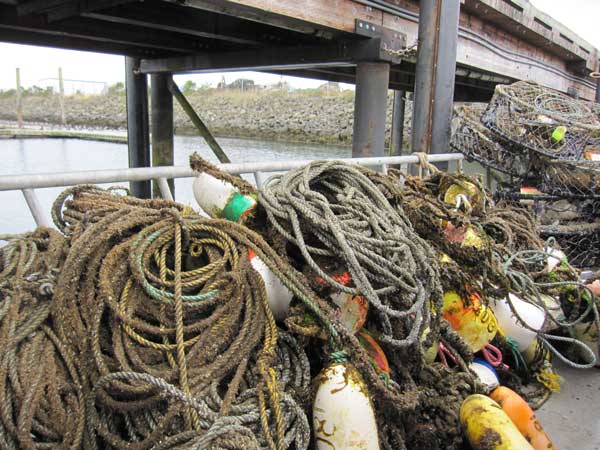Cell phones are being used by fishermen to bounty hunt for pay for lost fishing gear.
California fishermen created the retrieval project last year along with the Nature Conservancy to get ropes, buoys, pots and anchors out of the water after the Dungeness crab season so they don’t entangle whales, and Washington and Oregon quickly followed suit. Nearly 50 whales were taken on the west coast last year after the annual crab opener, one of the region’s largest and most lucrative fisheries.
“They are using their cell phones and its GPS to take a picture of what the gear looked like, tell when they found it, and any identifying markings on the buoy — the vessel, the ID number, and also the latitude and longitude of exactly where they found it,” explained Nat Nichols, area manager for groundfish and shellfish at the Alaska Department of Fish and Game office in Kodiak.
He added that it is not uncommon for gear loss rates in different fisheries to be “anywhere from 3 to 23 percent.”
Under a special permit, the West Coast bounty hunters head out two weeks after the Dungeness crab fishery closes to search for derelict gear.
“Dungies tend to be in shallower water and that means there is more wave energy and the gear can get lost or rolled up on the beach. A lot of it has a tendency to move around because it’s in the tidal surge,” said Nichols.
The fishermen get paid $65 for every pot they pull up. The gear then goes back to the original owners who pay $100 per pot for its return.
Whereas saving whales was the prime motivator for pot retrievals on the West Coast, in Alaska’s crab and pot cod fisheries, it’s ghost fishing and gear conflicts.
“The animals go in the pots and starve and that rebaits the pot, so they will fish for years. That can kill a lot of animals because they’re doing it 24/7 and always rebaiting themselves,” Nichols explained.
By Alaska law, all pots must use twine in escape panels that biodegrades in about 30 days. But sometimes the escape routes get blocked.
“At Kodiak, we average around 7,000 pots in the water for our small Dungeness fishery,” he said. “If you lose 10 percent or even 5 percent, that’s a lot. It starts to build up over the years and get in everyone’s way. It’s a burden on everyone out on the water if they constantly have to avoid all this gear that is out there doing nothing.”
Gear recovery permits are issued to help with retrievals shortly after a crab or pot cod fishery closes; a state enforcement vessel also does a roundup of all the gear it finds. Nichols said the main focus is preventing the loss of pot gear in the first place
He believes a cell phone bounty program could work in Alaska and “it’s been talked about” at the Kodiak office, although it would be on a much smaller scale.
“Even though we have quite a bit of gear in the water, I’m not sure it’s enough to really incentive people to go find it in compared to the West Coast,” Nichols said. “Instead of retrieving hundreds of pots and having 20 to 30 people participating in the recovery, we may just have three or so.”
The cell phone idea hasn’t attracted any takers yet at Southeast Alaska, said Douglas-based shellfish biologist Adam Messmer in an email from a survey boat. Southeast is home to the state’s largest Dungeness fishery, where about 45,000 pots are dropped each year.







.jpg.small.400x400.jpg)